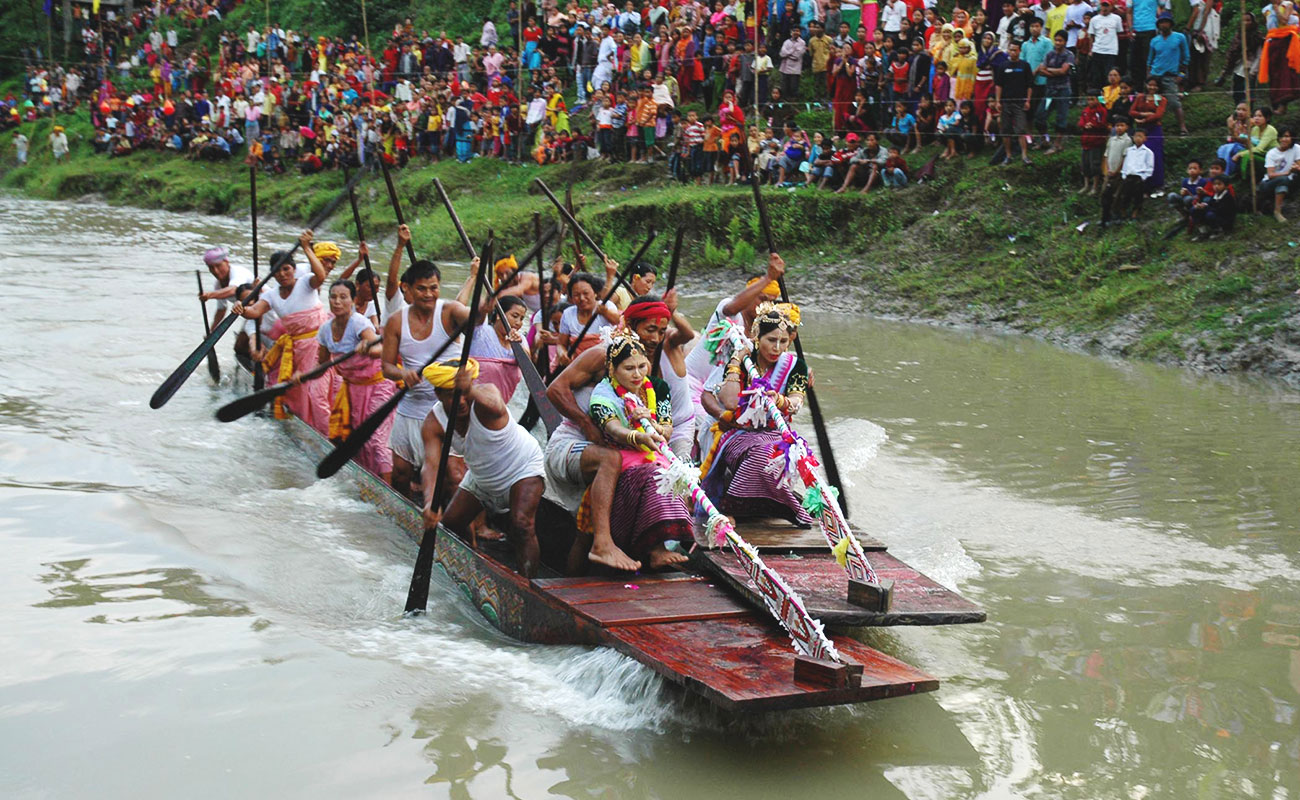Do you know that the game of polo originated in Manipur? Later the British soldiers and planters took the game back to England and modified it and popularized it around the world. Once a princely state, Manipur is seeped in history. It came under the British rule after the defeat in the historic Anglo-Manipuri war in 1891 where a war broke out between two allies, the British and the Manipuris after a strained relationship developed between the two parties on account of the murder of five British officers. During World War II, Imphal was occupied by the Japanese soldiers. After Independence it was merged in the Indian union on October 15th 1949 and subsequently became a full-fledged state of India on 21st January 1972.
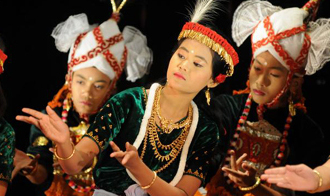 The locals lovingly call Manipur “sana leibak” meaning land of gold. And rightly so, it is surrounded by ranges of hills and forests laded with nagesar, jurul, Indian rubber, tan, oak, ash, teak and palm on all sides and streams and lakes that are filled with lotus flowers. It is home to the brow-antlered deer or sangai, exotic orchids with over 500 varieties of them and exquisite natural beauty. No wonder the Pandit Jawaharlal Nehru, the first first Prime Minister of India paid a fitting tribute by describing it as "Jewel of India". Lord Irwin, the then Indian Viceroy who held office from April 1926 till 1931, called Manipur “The Switzerland of India.”
The locals lovingly call Manipur “sana leibak” meaning land of gold. And rightly so, it is surrounded by ranges of hills and forests laded with nagesar, jurul, Indian rubber, tan, oak, ash, teak and palm on all sides and streams and lakes that are filled with lotus flowers. It is home to the brow-antlered deer or sangai, exotic orchids with over 500 varieties of them and exquisite natural beauty. No wonder the Pandit Jawaharlal Nehru, the first first Prime Minister of India paid a fitting tribute by describing it as "Jewel of India". Lord Irwin, the then Indian Viceroy who held office from April 1926 till 1931, called Manipur “The Switzerland of India.”
Manipur is bordered in the north by Nagaland, Mizoram in the south, upper Myanmar in the east as well as in the south and Assam in the west. Hill ranges from all sides surround the valley portion of the state.
A multi-cultural society with more than 29 different dialects spoken by several tribes and sub-groups Manipur is also home to other prominent communities residing in the state, who came here as migrants from other Indian states prominently include Marwaris, Bengalis, Biharis and Punjabis. Almost like a mini India, the different communities live together in harmony. Manipur is also a culturally evolved and a progressive society where theatre and fine arts are pursued with the same zeal as they would any other profession.
The overall literacy rate is 68.87 per cent. The state has produced international sportspersons like gold medalist boxer Dinkho Singh and Mary Kim and weightlifter Kunjarani Devi among others.
The sound of cymbals and drums fill its pristine skies; the picturesque landscapes come alive to the sway and swirl of raas-lila; and miles of undulating wilderness is caressed by silver clouds – welcome to Manipur – the jewelled land of the northeast.
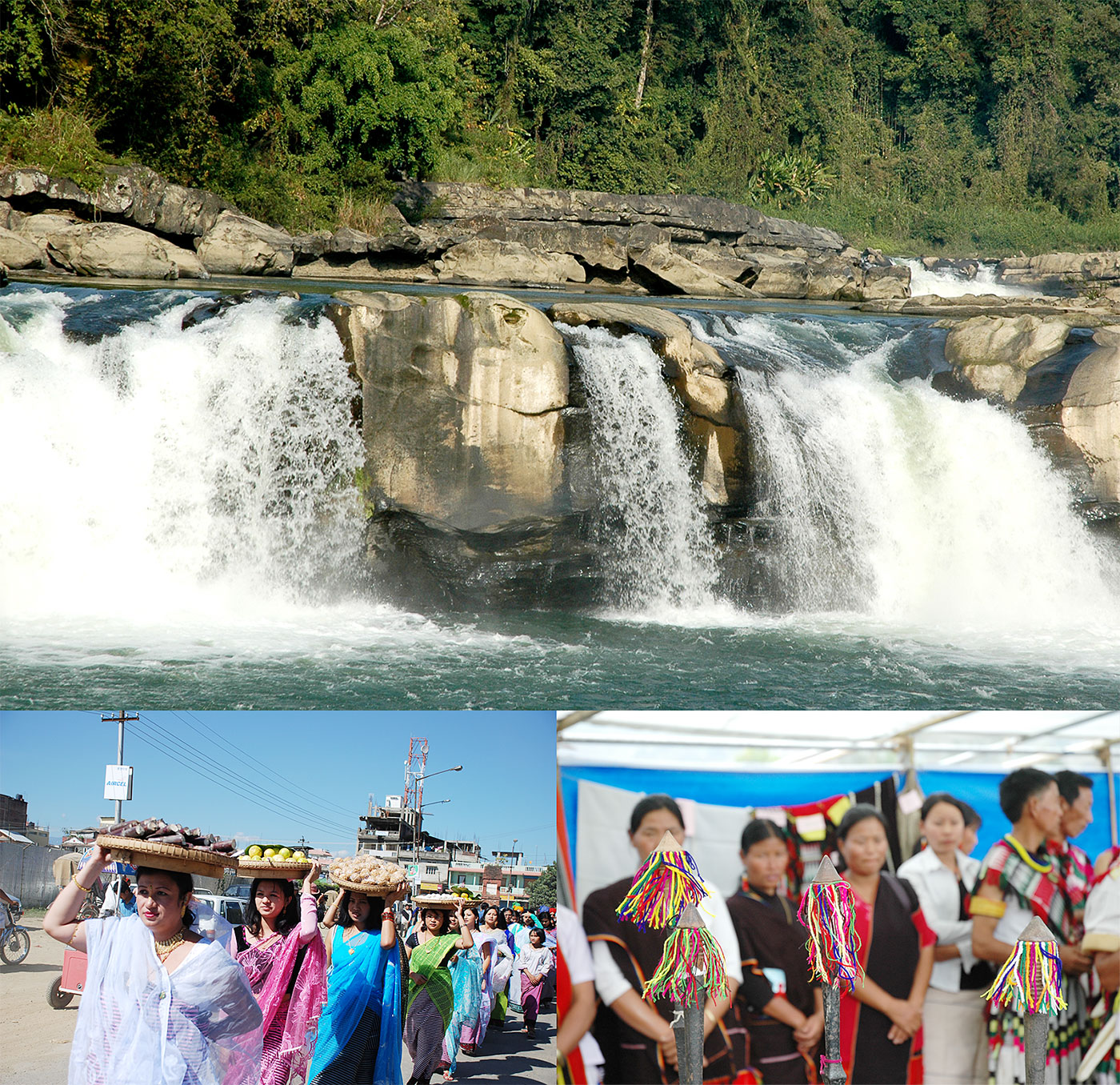
Some records suggest that the ancient rulers from China’s Qi clan ruled this region for long. Later historical evidences show that several Tibeto-Burmese groups thronged the area as well, and from these emerged the kingdom of Meitei -- whose recorded history dates them back to 33 AD. While several other tribes like kukis, nagas and caccharis tried to build their dominance over the land, the Meitei kingdom survived until Burmese generals invaded the region. In 1891 Manipur came under British rule, and survived as a princely state until 1947, afterwhich it was merged with the Indian Union on October 15,1949. It gained complete statehood as part of the Indian republic in 1972.
Apart from the Nagas, Kukis, Marings and Zomis, who constitute about 34 per cent of the Christian population of the state, there are the Bhamons or Manipuri Brahmins and Pangans or Manipuri Muslims living here as well. Large sections are followers of Vaishnavism too. Interestingly Sanamahism, the oldest practised faith of the state, is a Meitei form of religion, which believes in the worship of the Sun God. Sanamahism still has left its traces on the Hindu rituals today’s Manipuris follow.
Manipur’s joyous festival calendar too is steeped in ancient traditions and customs. Yaoshang, Manipur’s biggest festival held around February, is its premier celebration. Ningol Chakouba, a social festival in honour of the Metei women or Ningols is held annually in November. Incidentally, women enjoy a very respectable position in Manipuri society. The Manipuri New Year or Cheiraoba, too is held with much pomp and gaiety on the first day of the Meitei lunar calendar.
About 34 per cent of Manipur’s population is Christian. So Christmas is thus a very important festival in the Manipuri religious calendar.
The several art and dance forms of Manipur are devotional in nature – where performers pay their respects to the legends of the gods and goddesses. The Khamba Thoibi dance, for example is a veneration of the sylvan deity; the Pung Cholom, performance on the Manipuri mrindangam, is a vital part preceding the raas-lila and other religious ceremonies; while the Maibi dance, is a ritualistic performance that traces the history of creation. The Nupa Pala or the Cymbal Dance is another characteristic Manipuri style performance – it is a recital by male artistes wearing large white headdresses. Besides, the different tribes have their traditional dances.
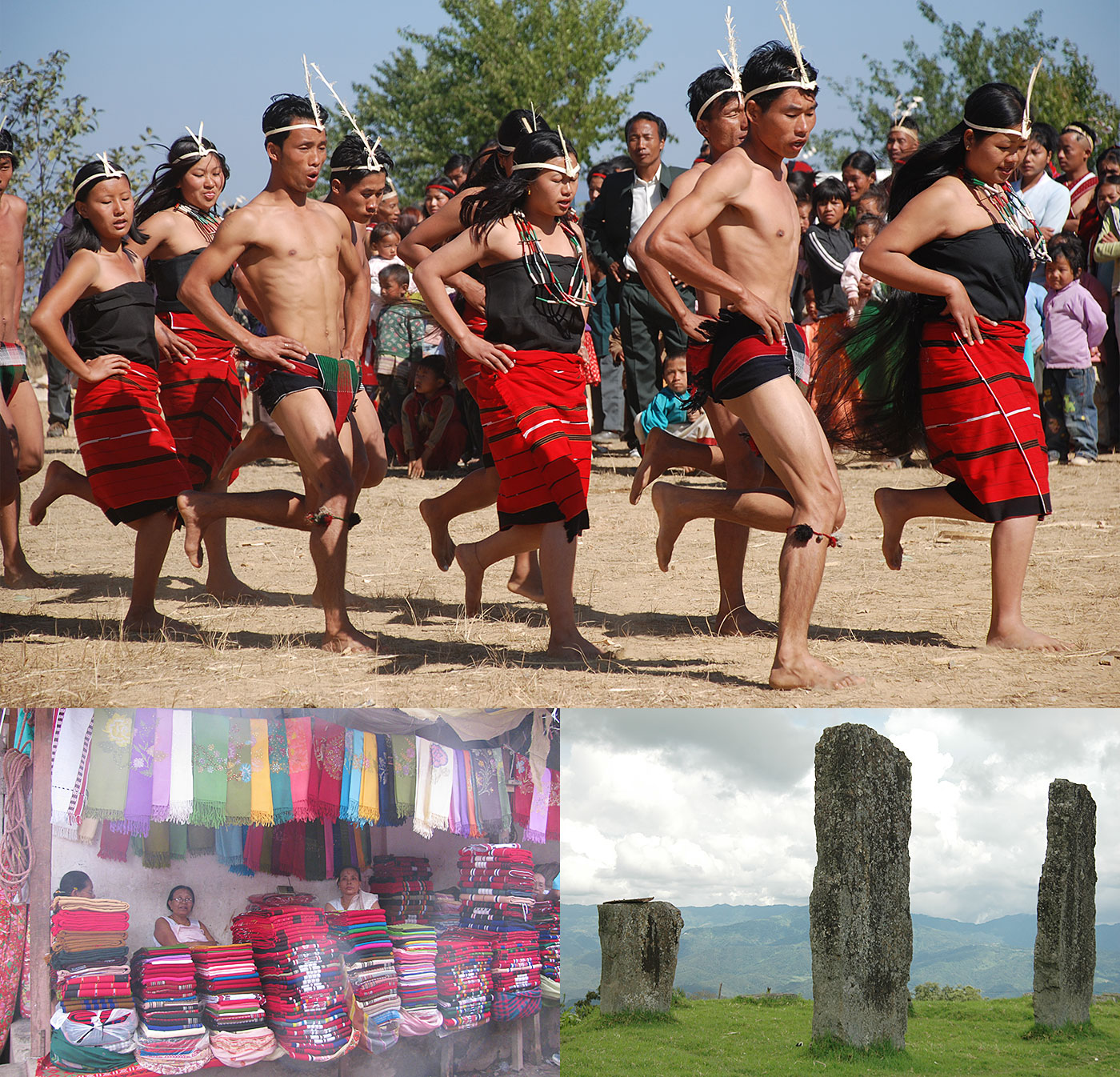
Vaishnavism, which spread its influence in the state in the early part of the 15th century, has left vast imprints on Manipuri art and culture. The celebrated Manipuri-style raas-lila, which pays homage to the legend of Lord Krishna and his beloved Radha – is one of the most acclaimed classical dance forms of India.
Several wrestling and martial arts forms exist in Manipur – these evolved during the ancient clan or tribal warfare, when it was imperative for warriors to hone their battle craft. The game of polo, known locally as Sagol Kangjei, originated in the heydays of Meitei dominance. The Manipuri martial-art form of thang-ta too was developed during the Meitei reign. Mukhna or Manipuri wrestling, Yubi Lakpi or coconut rugby or the Oolaobi, as practised today – are several strenuous games, which put to test a player’s mental and physical agility.
About 67 per cent of Manipur’s land is covered with the sub-Himalayan forested hills. Interestingly the state has a uniquely fascinating topography – an oval-shaped valley in the centre surrounded by an outer-lying area of rugged hills. Depending upon the altitude, the vegetation varies from tropical semi-evergreen to pines and moist deciduous. This striking variation of flora includes pines, bamboos, teak, oak, and types of reeds; huge rubber, cardamom and coffee plantations; and vast tracts of emerald paddy fields as well. A pleasant summer with sufficient rains and a broad network of rivers and lakes keeps its soil rich.
Almost a state symbol of sorts, are Manipur’s orchids of exotic colours and shapes. Found in abundance throughout the state, it is believed that the region offers around 500 varieties of this precious bloom. The rare ‘Siroi lily’, the only terrestrial variety of the orchid is found atop the Siroi Hills.
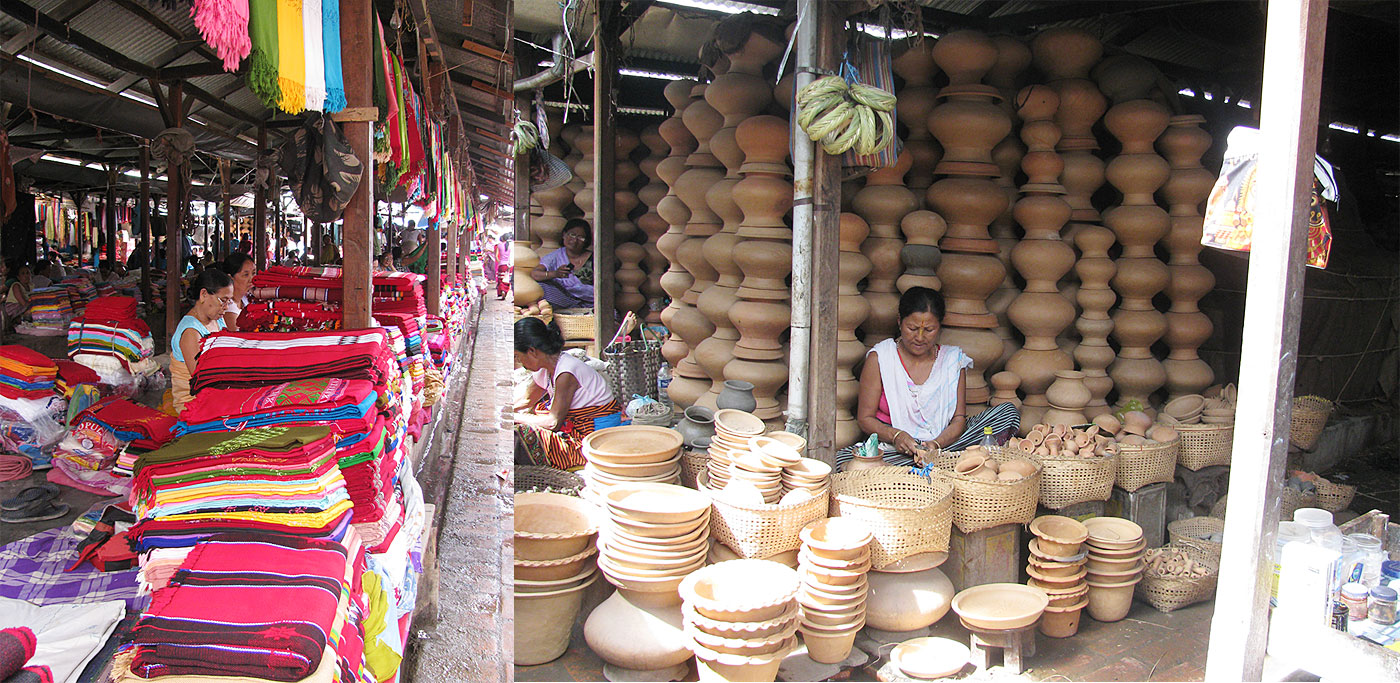
Manipur is also an ideal getaway for wildlife enthusiasts – an amazing variety of animals and birds are found in its lush terrains. These include the Hoolock Gibbon, the Sloe Loris, the Spotted Linshang, the Clauded Leopard, Barbacked Pheasant, Blyths Tragopan, and Burmese Pea-Fowl. Four different species of Hornbills, the most unique Sangai, dancing deer and a type of salamander known as 'Lengwa' found at the foothill of Siroi in Ukhrul (one of the highest hill-stations) are also part of its rich natural reserve.
Among its prime attractions is the network of water bodies in Manipur. Originating in the blue hills of the region - the Barak, Manipur and Yu rivers, criss-cross through charming landscapes while being fed by several tributaries on their course.
Lake Loktak, a very scenic destination, 48 Kms from the capital city of Imphal, is the largest freshwater lake in the region. Tourists can get fascinating glimpses of the lake from hotels and tourist bungalows situated atop the surrounding Sendra islands. The lake is strewn with a unique natural feature called, phumdis – floating islands of soil and vegetation.
The Keibul Lamjao National Park, on the southern shores of Loktak is the largest phumdis of the lake – therby making it the only floating park in the world. It is also the only remaining natural habitat of the Eld’s Deer, also called Brow-antelered deer.
Other prime attractions of Manipur include:-
- Tamemlong – 156 kms from Imphal – known for its waterfalls, deep gorges and exotic orchids.
- Moreh – border town between manipur and Myanmar; 110 kms from Imphal. Tourists visitng here can avail of tours into Myanmarese towns of Mandalay and Kalimiew.
- Breathtakingly beautiful hill stations like Mao, Koubro Leikha and Red Hill
- Bishnuppur – 27 kms from Imphal – here stands the conical temple of lord Vishnu built in 1467 during the region of King Kyamba.


